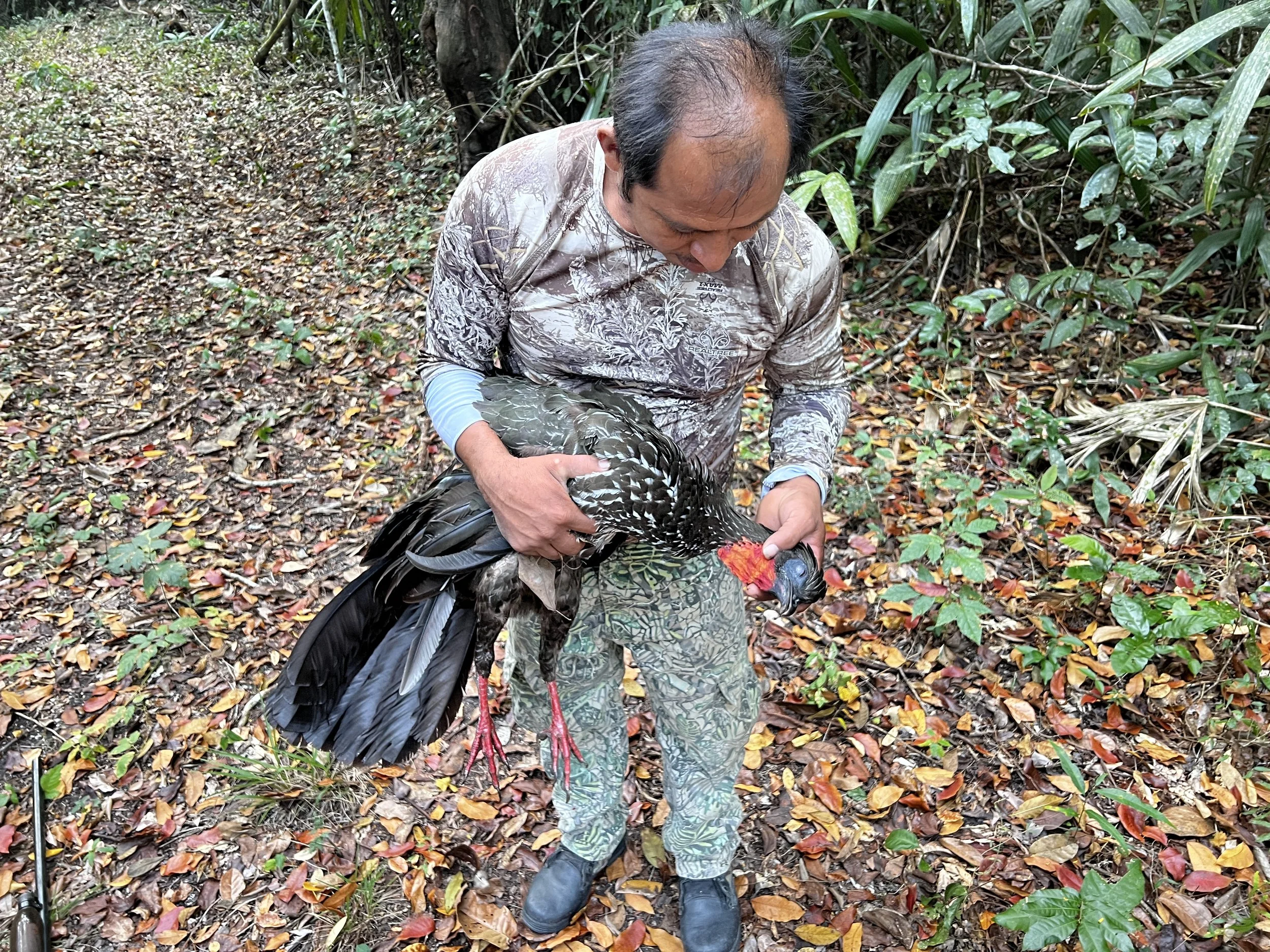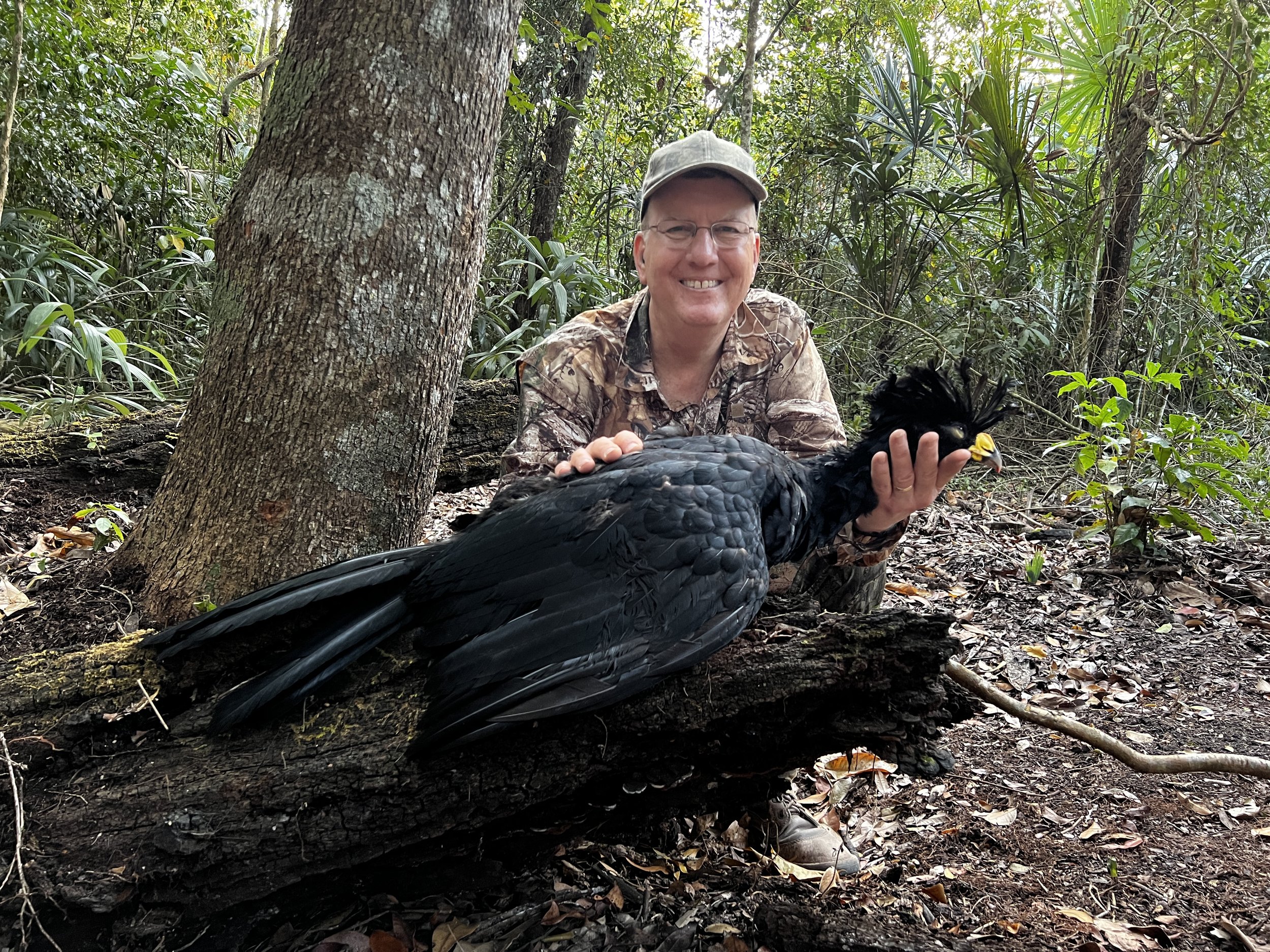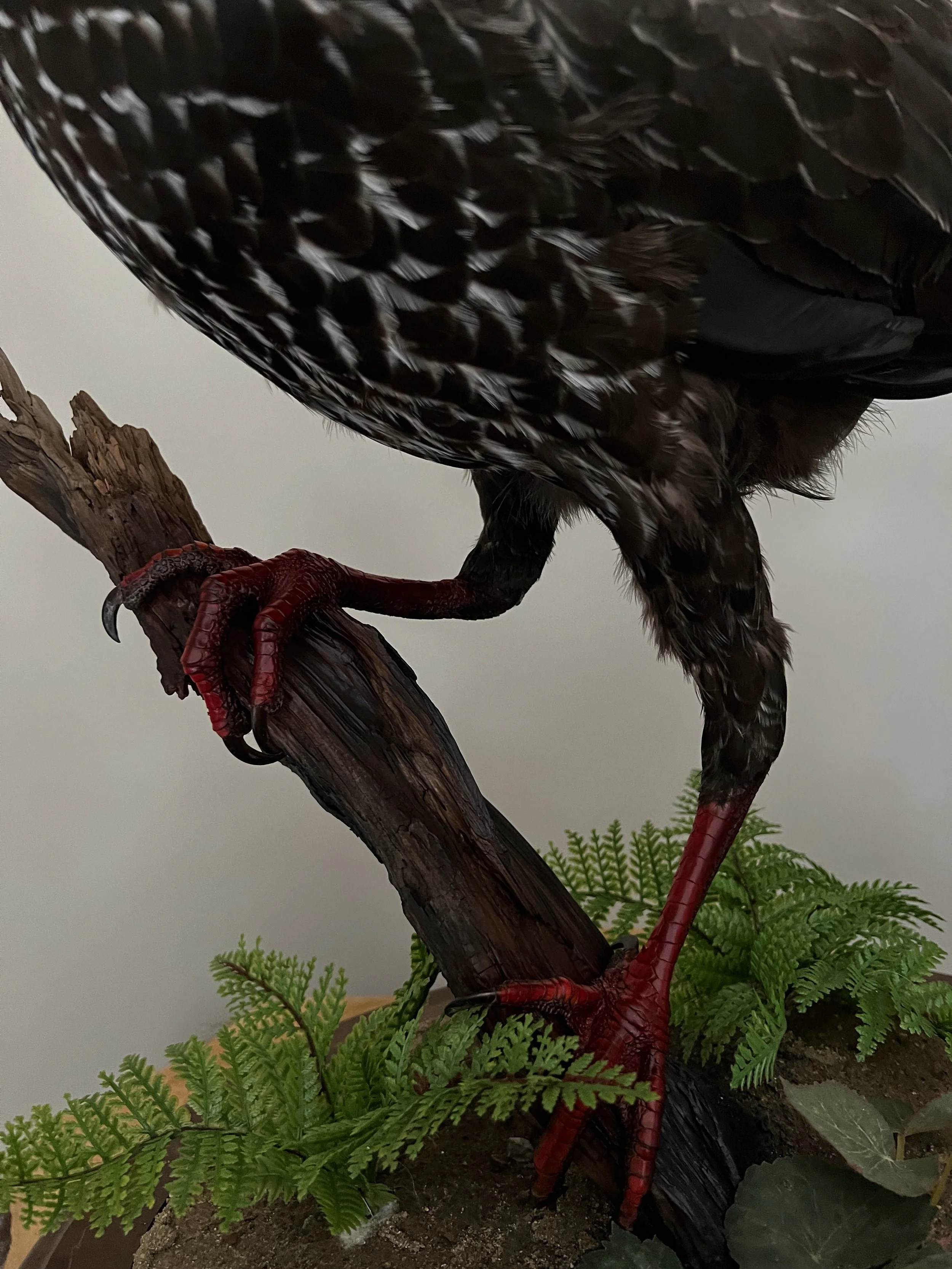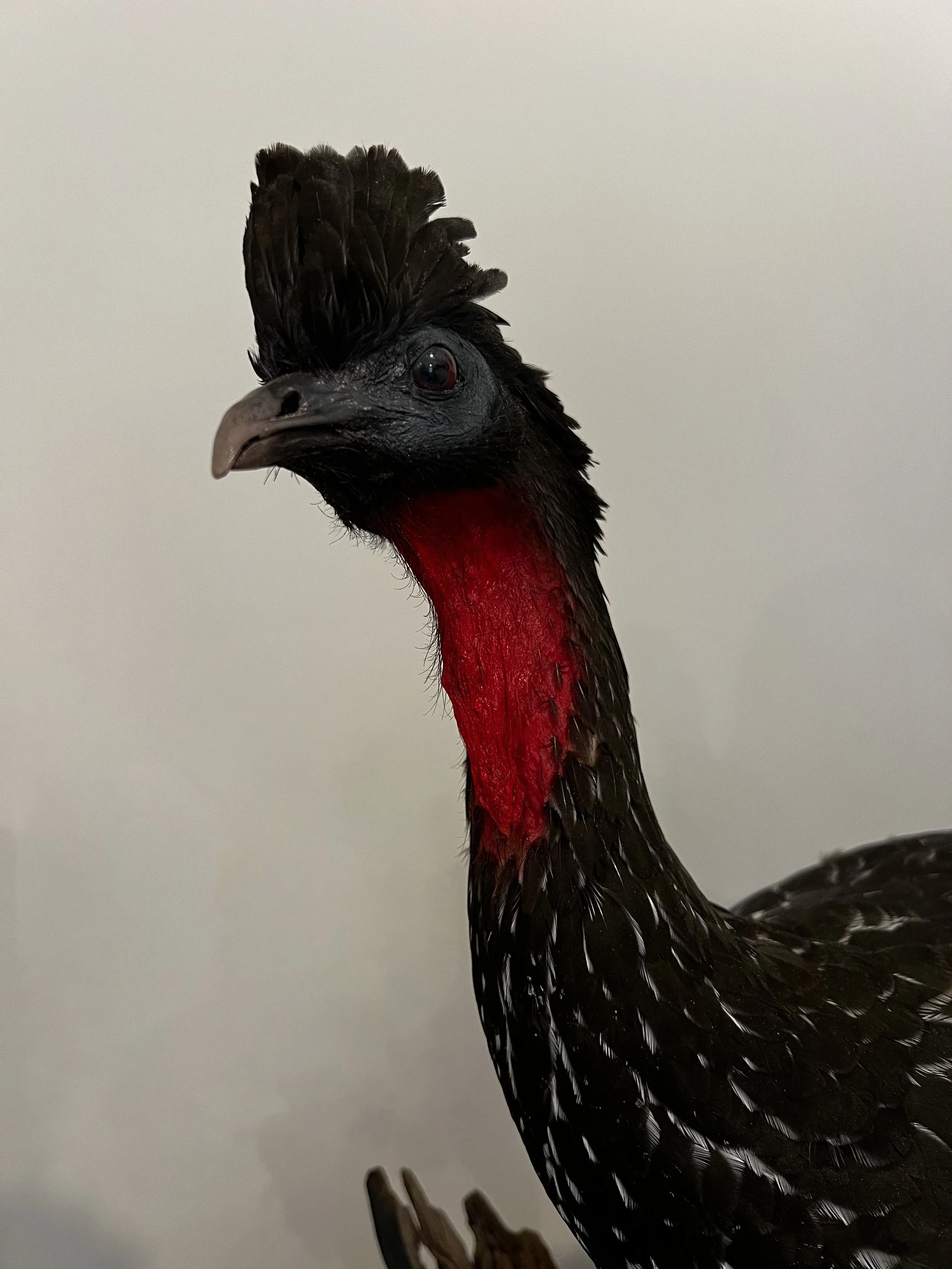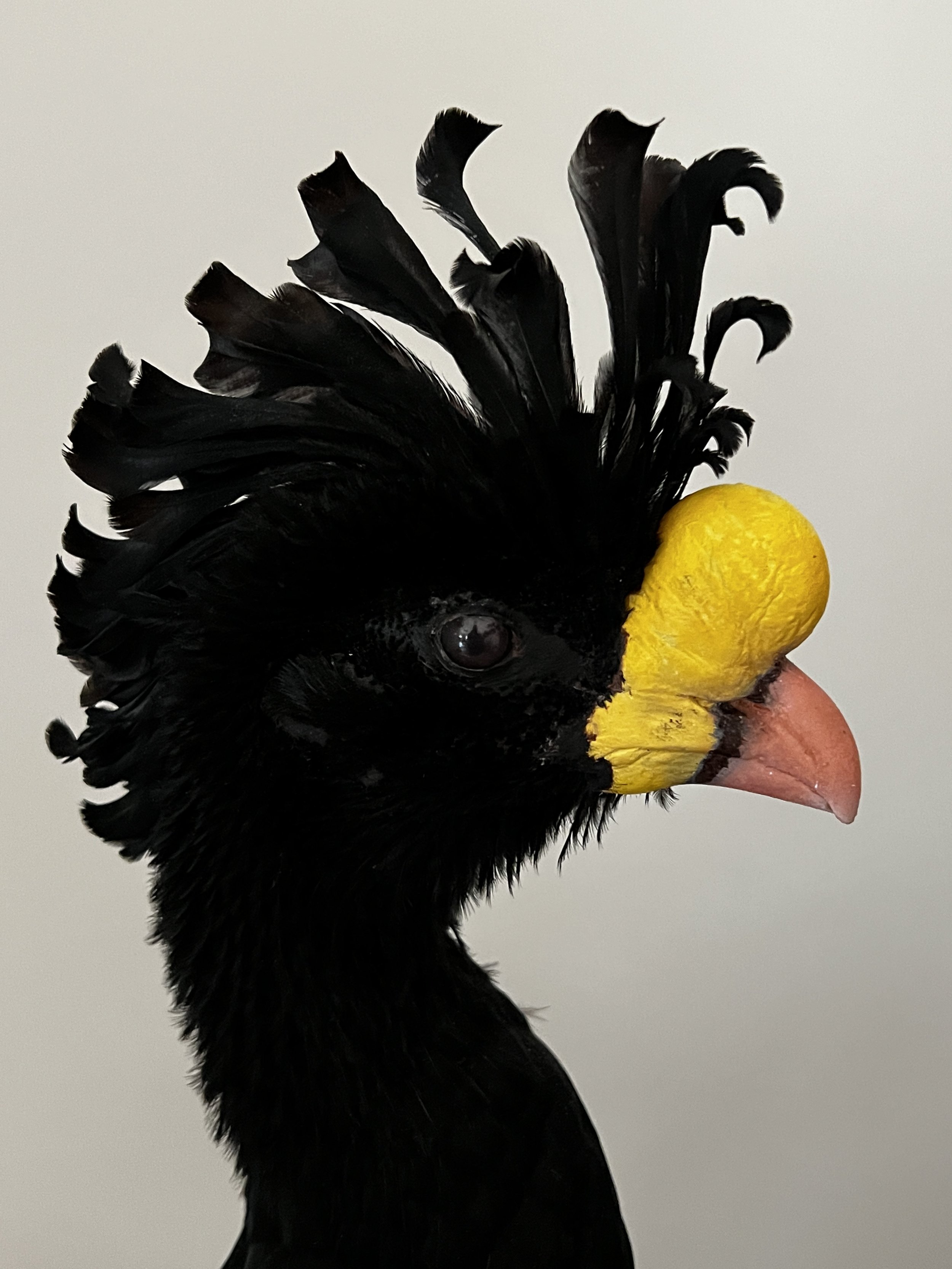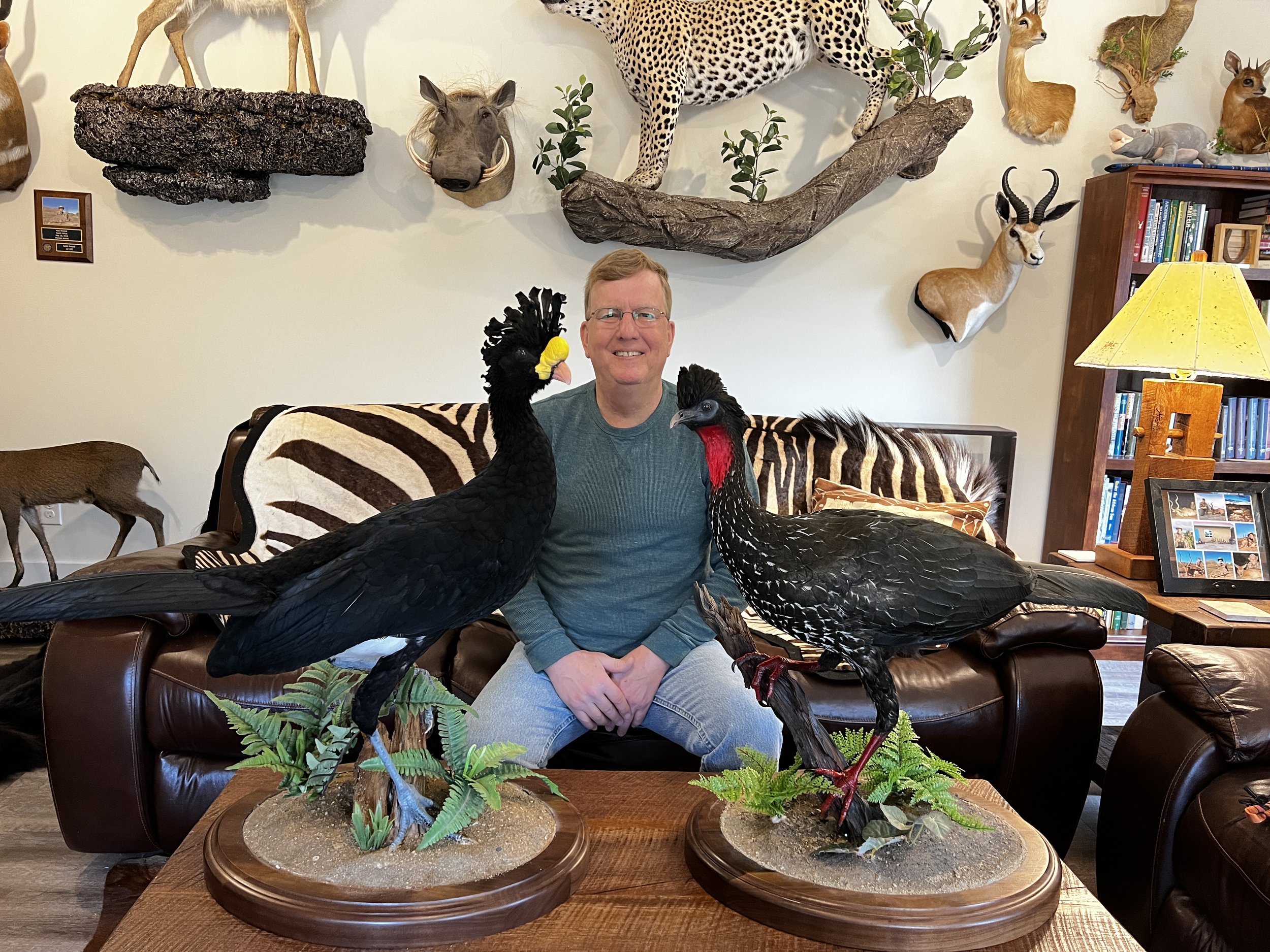Bird Man from Moldova – Igor Carogodin the Artist - Part 2
Eyes for Imagining and Hands for Creating – A Great Curassow and Crested Guan Illuminate the Artist and His Artistry
Igor’s eye for settings, movements and behaviors gives him the ability to build a conception for clients who lack his knowledge and artistic ability. My two bird species taken on a recent trip to the dry tropics of the Yucatán peninsula are wonderful examples of what this involves. Though I successfully hunted two of the ‘most difficult North American game species’ (according to Craig Boddington, that is), the Grey-brown and Red brocket deer, I was equally pleased with taking two of the beautiful birds from the region, the Great Curassow and Crested Guan. Both turkey-sized, with marvelously colored plumage, photos of these two animals captivated my daydreams in the weeks prior to flying to Merida, Mexico, the jumping off point for my hunt.
The first order of business when reaching ‘Brocket Camp’ was patterning the Ithaca Model 37, Featherlight, 12 Gauge pump shotgun. It was a good thing we did. In my hands, it shot high. Firing at tiny deer, and birds with a very limited ‘kill-zone’ required excellent shot placement, or we could have a train wreck with wounded animals. Knowing the trajectory, I am pleased to say that all four animals – both deer and birds – required only a single shot each. This also meant that for the bird mounts, as Igor stated, “You did not lose feathers from multiple shots.”
As for the hunts, the Crested Guan came quite easily – on the morning of the third day of the five-day hunt.
The Great Curassow, on the other hand, became a veritable Moby Dick, with a several hour trip to the very furthest edge of the concession, on the last morning, necessary to finally locate this elusive game bird. This last gasp effort netted a gorgeous male, but not until after I missed an easy shot at a roosting bird. I could try and make excuses by pointing to the limited early-morning light conditions, but then again, I hit the second target in almost the same conditions. So, it’s more accurate to state that I just flat missed the first stationary Curassow…
During pre-trip discussions, Igor warned me that there was a significant chance that my bird skins would not make it back to him in good shape. He shared that for some time he had refused to accept specimens from clients if they planned to hunt with one of the main outfitters because of the consistently terrible condition of the skins and feathers of specimens. He kindly agreed to receive mine mainly because I was a friend of a friend, and because he had never dealt with my outfitter – Tankab (https://www.tankab.com/). Given Igor’s concerns, I wondered if my birds would make it back in good shape, or with the damaged feathers and rotted heads he had seen before. I am happy to state that when Igor received the Guan and Curassow, this was his report: “We have mounted hundreds of birds from the Yucatán and none of them were in as good condition as your two birds! You were very fortunate to have hunted with Tankab.”
The first direction Igor needed from me concerned the ‘setting’ for the mounts. From my review of scientific literature and discussions with Igor, I knew the Guan was arboreal, spending most of its time high in the tropical forest canopy, while the Curassow preferred the forest floor for feeding and mating. Igor suggested a wall-mount for the Guan – with a tree branch extending from the base as its perch – and a floor base with a small upright log and [faux] tropical soil for the Curassow. The logistical problem for me was the rapidly shrinking wall space of my trophy room. I opted instead for matching floor mounts for both birds. After all, I reasoned, the Guan does occasionally run around in the understory of its tropical, forest home.
The next decision was the ‘attitude’ of each bird. Igor sent photos of previous mounts of these species. Scanning through them, I realized how well he captured the natural poses seen in videos and photographs. I was also amazed by his use of the correct vegetation and soil type I’d seen in the Yucatán when on my hunt for the Guan and Curassow. I chose poses for both birds involving the elevation of one foot grasping an upraised small log. The photographic examples sent to me indicated the exquisite detail I could expect for my trophies. And that is exactly what the completed Guan and Curassow mounts provide. From the spreading of the three front-most toes under their center-of-gravity as the Guan and Curassow lean slightly, to the grasping of the rear-pointing digit into the rough texture of the log, the feet captured the action of the animals as they paused while foraging.
Moving up from the feet, the pigments of the legs, grey on the Curassow and Deep red on the Guan draw the viewer’s attention to the natural attitudes of both birds. The leg coloration also provides a contrast for the jet-black feathers of the Curassow’s Tail, Breast, Wings, Neck, Face and Crest, as well as the snow-white covering on its crissum (area surrounding the cloacal opening). The dark charcoal grey with white speckling of the Guan’s plumage contrasts amazingly with its deep red colored legs. Both birds have additional, striking coloration on head and neck; the Guan possesses a bright red throat wattle, while the Curassow displays a fleshy yellow cere surrounding the base of its bill.
The Guan and Curassow sport crests, with the latter species’ crest reminiscent of a teenager’s jelled head of hair.
In total, Igor’s artistry added nothing to the natural beauty of the various parts, but rather, emphasized the interaction of the different structures and colorations, yielding a whole much greater in beauty than the individual components. If you’re not certain from what I’ve stated, yes, I will ask Igor to take me again as a client in the not-too-distant future…
Contact Igor Carogodin at igorcar@hotmail.com.
Mike Arnold is a Professor of Genetics at the University of Georgia and author of the 2022 book, BRINGING BACK THE LIONS: International Hunters, Local Tribespeople, and the Miraculous Rescue of a Doomed Ecosystem in Mozambique. Mike’s book is available for purchase now at bringingbackthelions.com.

